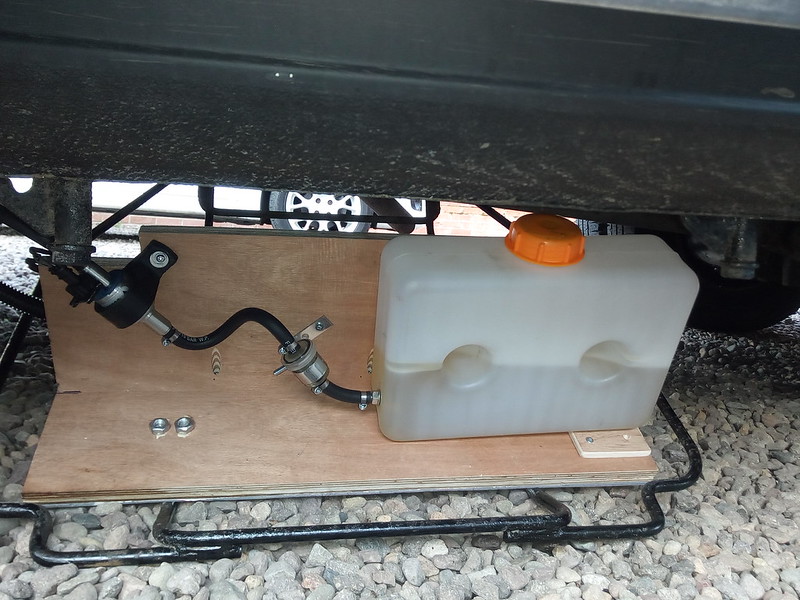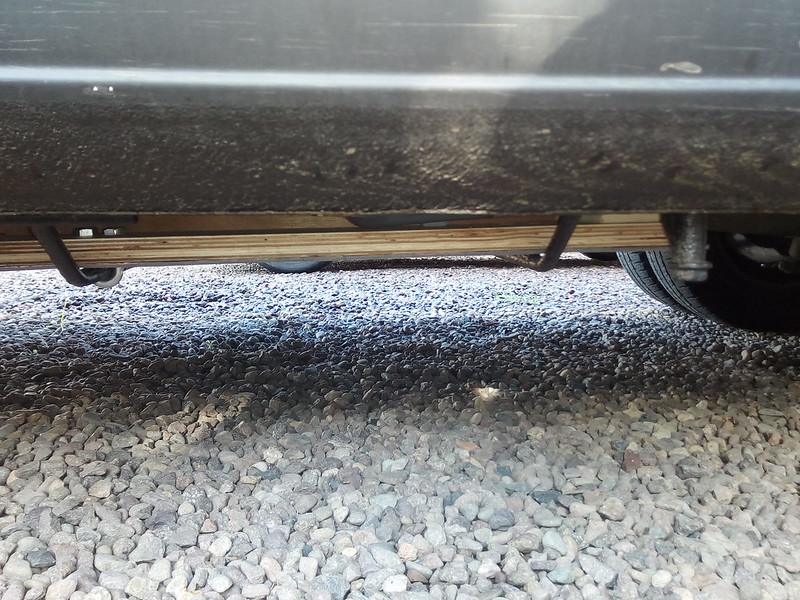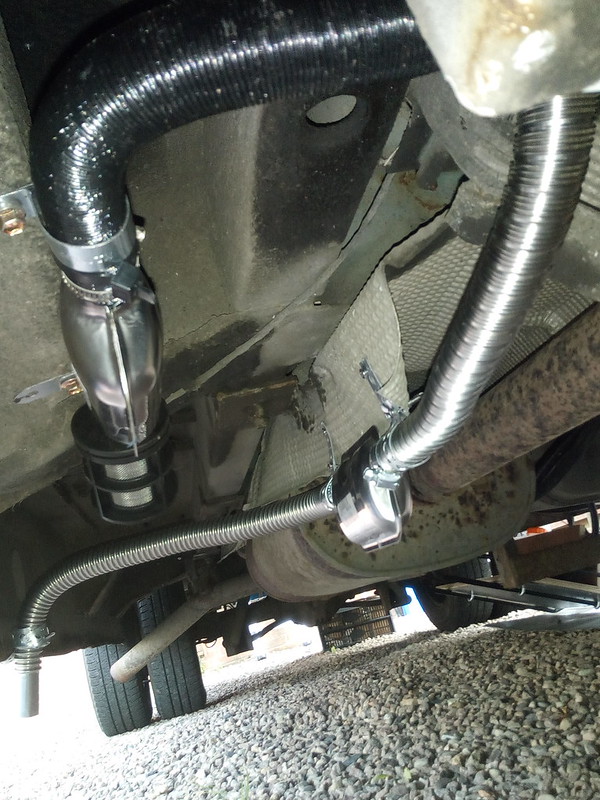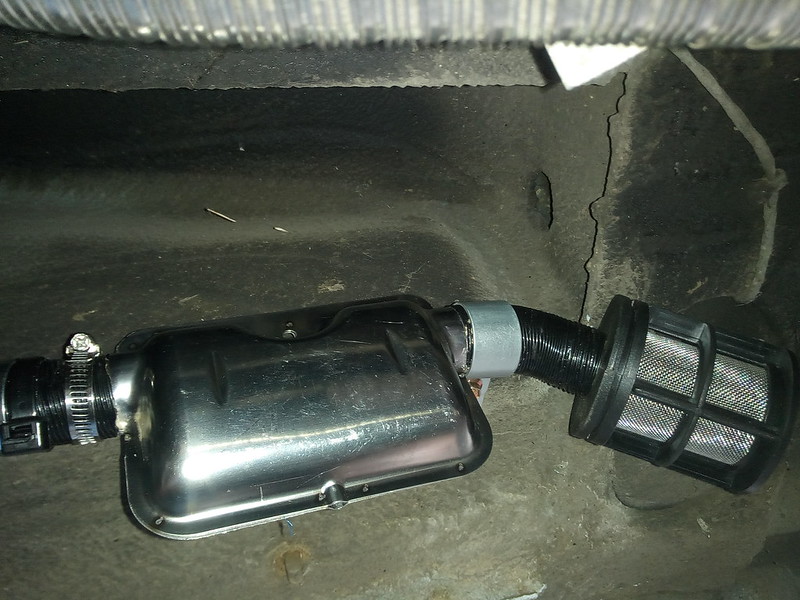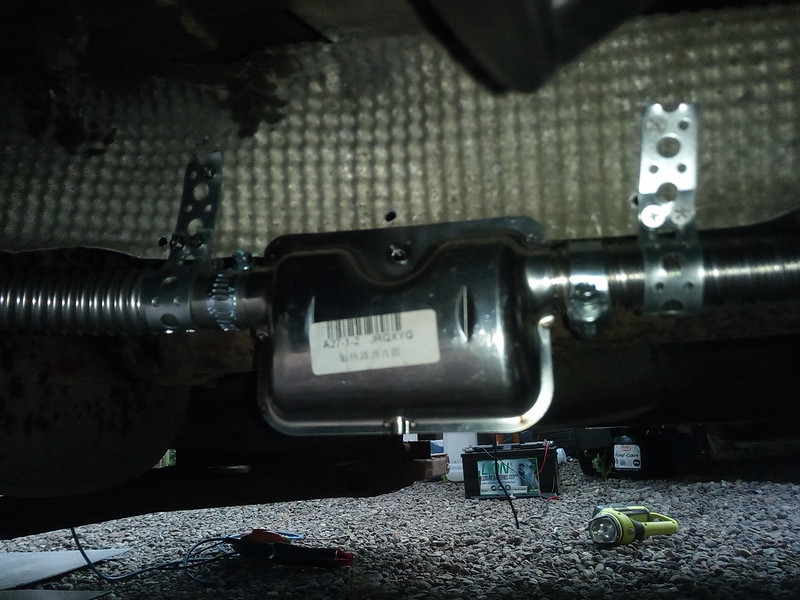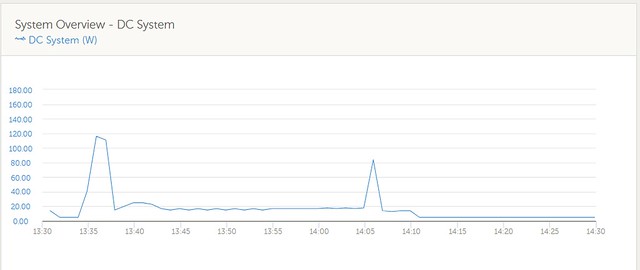wildebus
Forum Member
Heater
In my last conversion I installed an Eberspacher D2 Airtronic Diesel Heater and it was great but so it should have been as it cost over £600 (that is just the heater and parts, no installation costs as did this myself).
but so it should have been as it cost over £600 (that is just the heater and parts, no installation costs as did this myself).
For my VW LT Conversion, I wanted another Diesel Heater but with the cost of an Eber' D2 - which had risen to over £750 now for the kit only! - I couldn't afford that so decided to risk the cheapo chinese Eberspacher clones at around £150. So a substantial saving on the cards there .
.
Part 1: Introduction and Internal Installation
The plan was to install under the drivers seat, same as I did on the VW T5 with the Eberspacher. I checked Youtube for any tips on installing on a VW LT (aka Sprinter T1N) as can always find a handy timesaver on 'the tubes' but not in this case
Lots of "installing an Espar D2 on my Sprinter" videos but all for the later Sprinters (the 2nd Gen NCV3 model) and while the seat base looks very similar, the under-chassis under the seat was totally different. So on my own here (but as I tend to be old blue eyes ('I do it my way') anyway, suited me
So this is the space the Heater will be located in
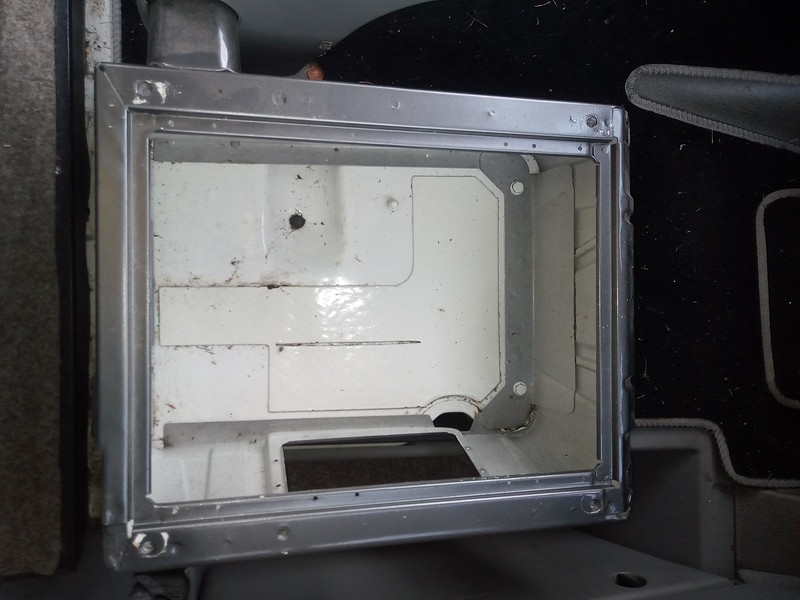
Empty Seat Base by David, on Flickr
The electrics (fuses, relays, etc) are usually located under this seat but I had moved them to the other seat base a while back in readiness for fitting a heater here in the future.
This is under the vehicle from around centre line towards outer side
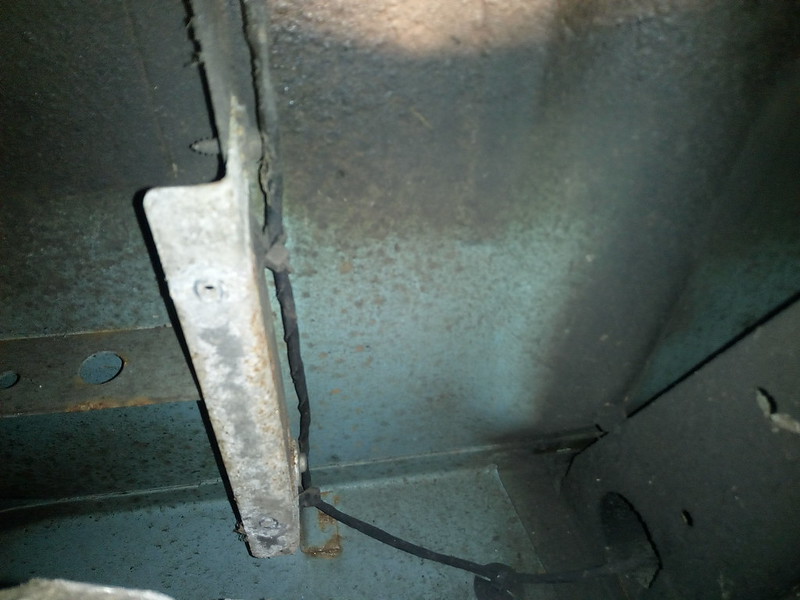 Underchassis under Seat by David, on Flickr
Underchassis under Seat by David, on Flickr
Looks fairly roomy but in fact not the case. The Bar with the cable clipped to it goes left to right and is around the upper third of the floor under the base. And the part at the end (where the cable curls round to carry on to) is actually a massive front to rear chassis support that is right in the middle of the seat base, so a major area inside the base is no use for the heater mounting.
Transferring the dimensions of obstructions from below to the base area, the options are very limited and this is what I decided on (rubber gasket shows the heater inlet/exhaust pipe positioning)
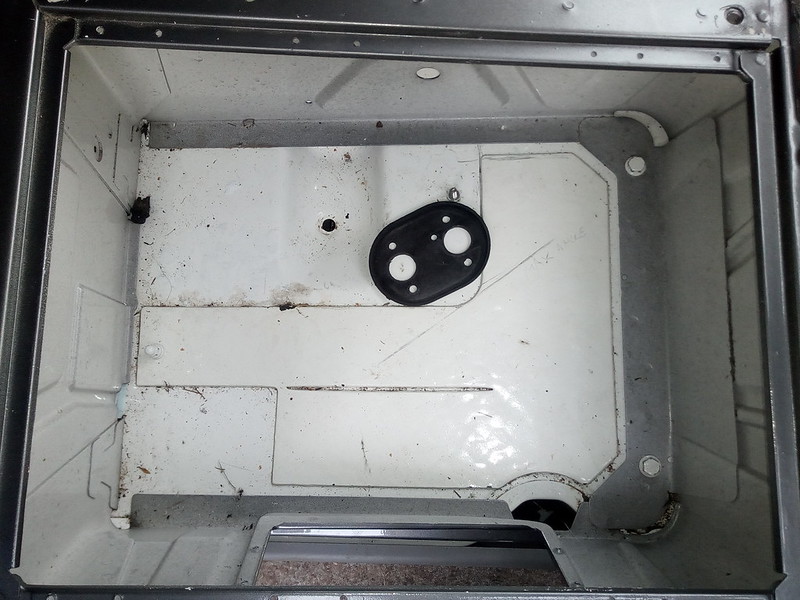
Best Location for Heater by David, on Flickr
Essentially the white sheet just below the rubber gasket and to the right of the gasket are no-go areas for fitting. And to the left of the gasket there is a drop for cable routing which would make sealing a hole very tricky.
A couple of holes drilled out
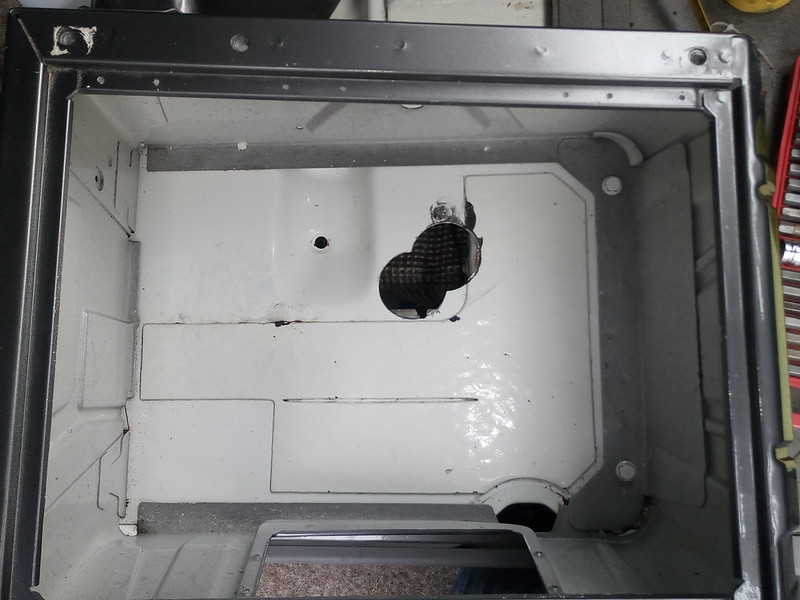
Holes Drilled by David, on Flickr
A little close to the chassis beam but workable
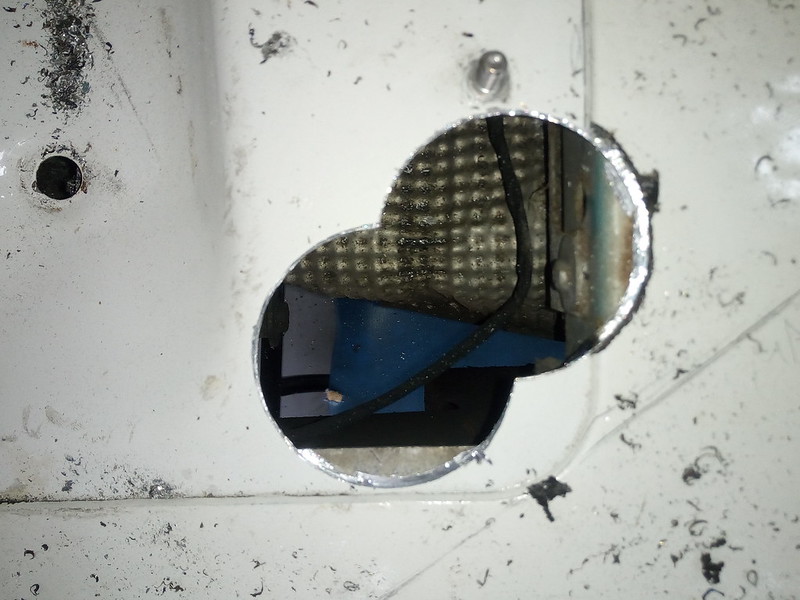
Close! by David, on Flickr
You can see the exhaust shield below. This was dropped and moved out the way at the start (the photo showing the space underneath was actually taken with the camera in between the shield and the floor as the exhaust runs directly under where the heater is going!)
The Heater comes with a mounting plate

Mounting Plate with Butel Tape by David, on Flickr
I specifically chose a kit with a plate (not all kits have them) as I think it is much better to make all the connections and secure them and then drop the lot in place as a oner rather then try and secure individual bits from underneath.
I added the tape as a sealing method. Much cleaner then using something like sikaflex in this situation.
And dropped into position

Underchassis view by David, on Flickr
(The black around the hole cutout is a heavy dosage of Hammerite to protect the cut metal)
Drilled out another hole for the heater outlet at the back of the seat base
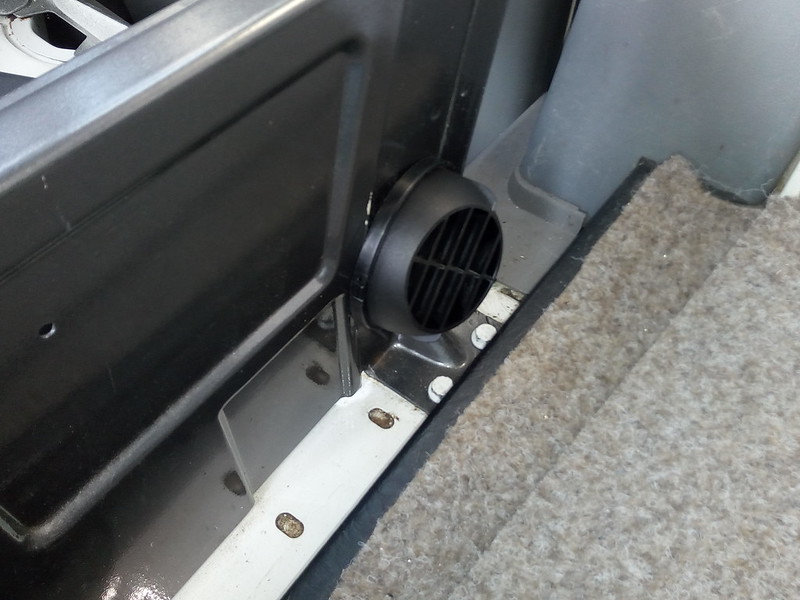
Heater Outlet at back of Seat Base by David, on Flickr
And a birds-eye view of the heater all installed
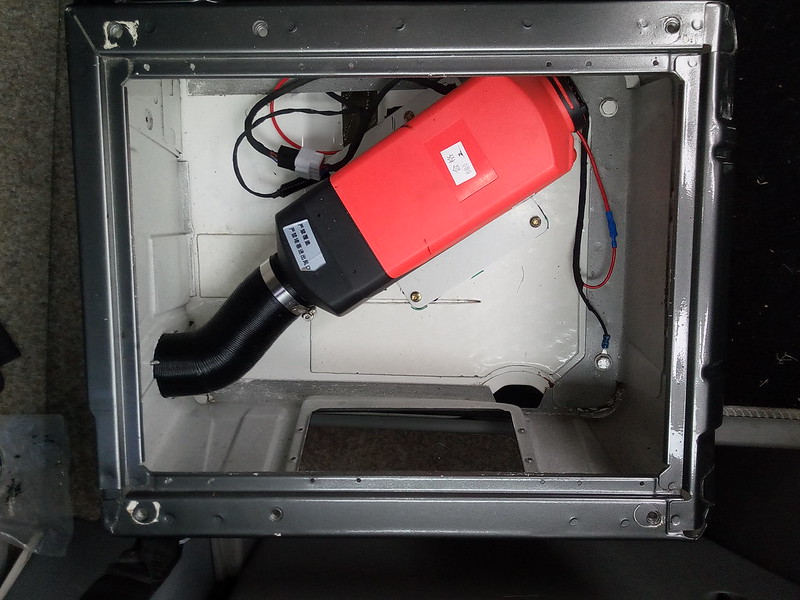
Heater setup and wired up by David, on Flickr
I had previously run a 2.5mm cable in readiness for a heater so just routed this to the base and used a base bolt as the ground. (these heaters have a bit of a reputation for undersized cables leading to high voltage drops, so by chopping off most of the supplied power cable it will help eliminate that)
And the seat base cover refitted
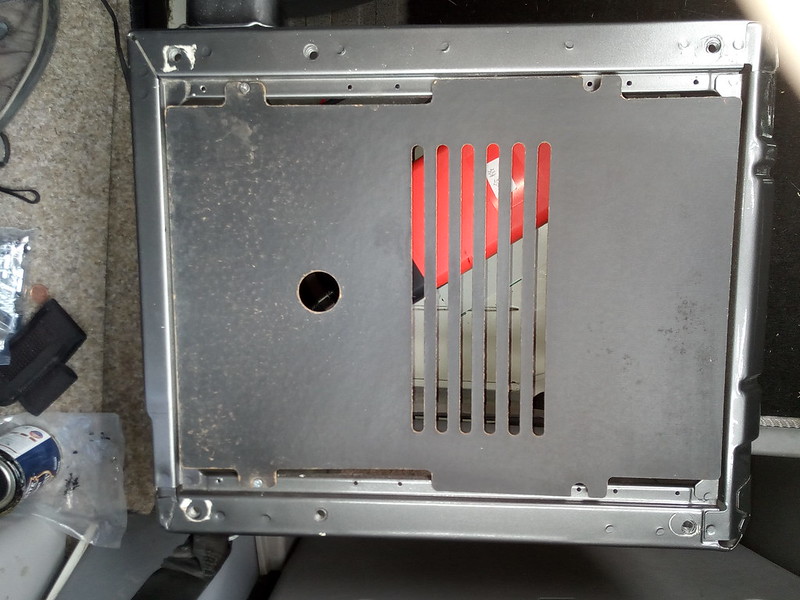
VW Hardboard Seatbase Cover by David, on Flickr
I only have one of these (need one per seat really to protect the electrics under the other seat) and it has gone pretty droopy, so I made up a replacement in plywood
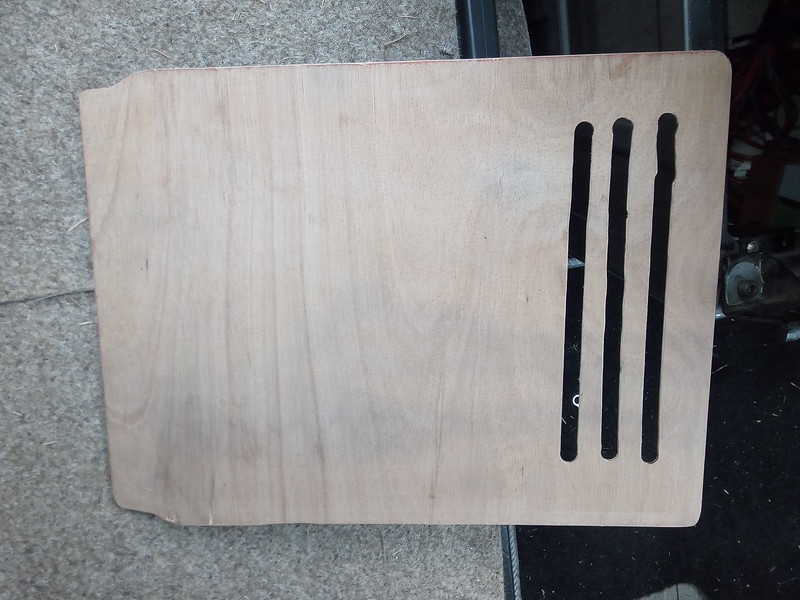
Replacement Ply Seat Base Cover by David, on Flickr
I routed out some ventilation slots (unfortuatly the guide slipped on the first slot ), positioned in a place that would work better for the heater inlet and then sprayed black to blend in like the original
), positioned in a place that would work better for the heater inlet and then sprayed black to blend in like the original
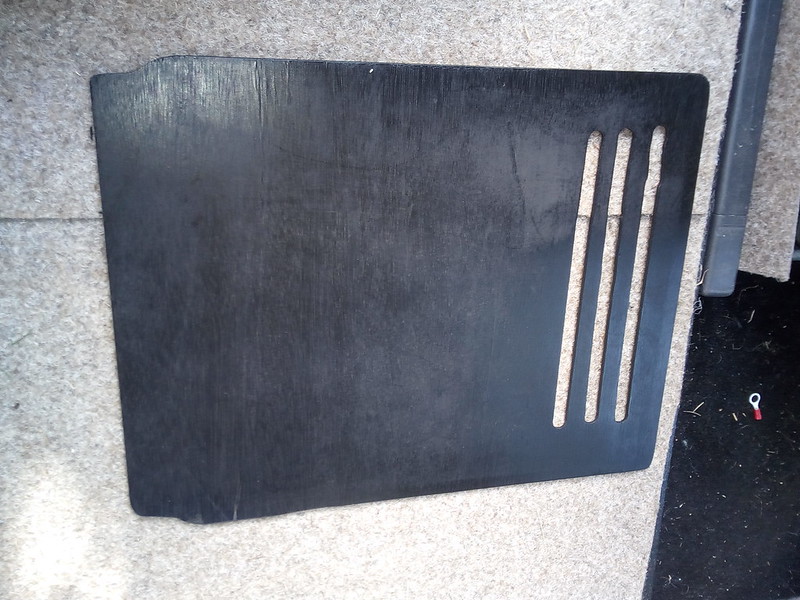
Ply Seat Base Cover Painted by David, on Flickr
And put in place
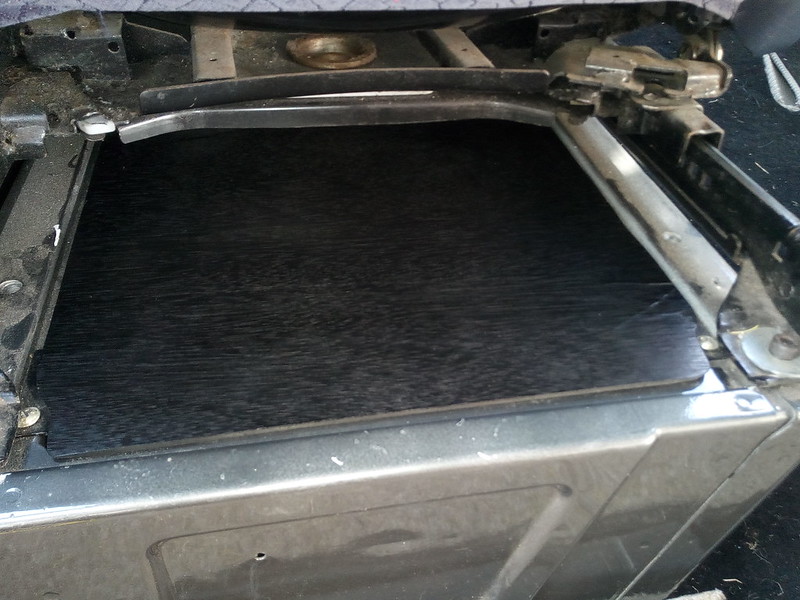
Ply Seat Base Cover in Place by David, on Flickr
These Heaters come with a controller of course, but it is pot-luck to which one you actually get with the kit! My kit was shown with a fairly basic rotary controller, but I actually got an electronic LED unit
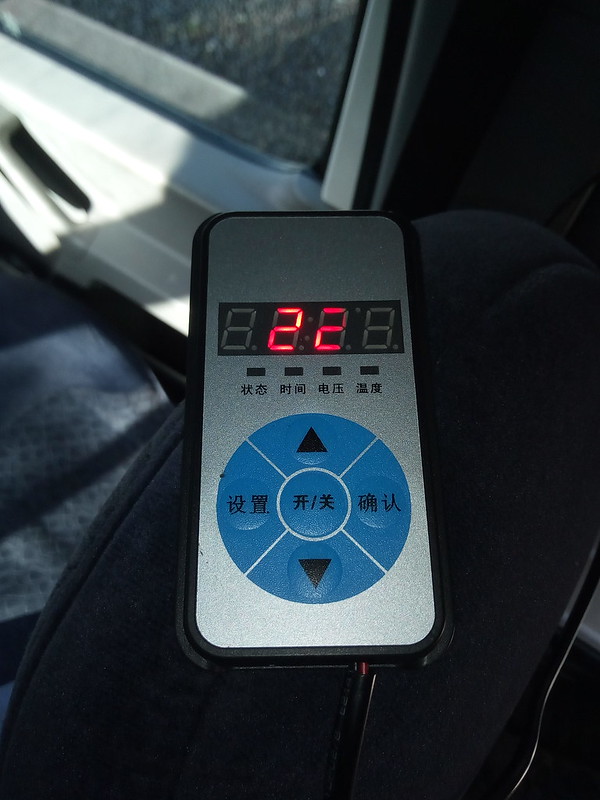
Heater Controller by David, on Flickr
(due to the LED refresh, the digits don't show up properly in a photo)
Initial stumbling block as no instructions and buttons in Chinese, but now I have sussed it out, this controller is actually pretty good. It has a temp sensor in so you can set a target for the heater to go to; It also has a clock and you can set 2 timers for it to go and and off (it is just a 24 hour clock, no days, so you cannot set different profiles for say weekdays and weekends).
Overall ... nice unit. I have not yet worked out where to fit it (it has a holder it clips into so can be fixed to a wall say, and then unclipped and moved elsewhere. how useful that is I am not sure yet!)
OK, that concludes the Inside setup.
In my last conversion I installed an Eberspacher D2 Airtronic Diesel Heater and it was great
For my VW LT Conversion, I wanted another Diesel Heater but with the cost of an Eber' D2 - which had risen to over £750 now for the kit only! - I couldn't afford that so decided to risk the cheapo chinese Eberspacher clones at around £150. So a substantial saving on the cards there
Part 1: Introduction and Internal Installation
The plan was to install under the drivers seat, same as I did on the VW T5 with the Eberspacher. I checked Youtube for any tips on installing on a VW LT (aka Sprinter T1N) as can always find a handy timesaver on 'the tubes' but not in this case
Lots of "installing an Espar D2 on my Sprinter" videos but all for the later Sprinters (the 2nd Gen NCV3 model) and while the seat base looks very similar, the under-chassis under the seat was totally different. So on my own here (but as I tend to be old blue eyes ('I do it my way') anyway, suited me
So this is the space the Heater will be located in

Empty Seat Base by David, on Flickr
The electrics (fuses, relays, etc) are usually located under this seat but I had moved them to the other seat base a while back in readiness for fitting a heater here in the future.
This is under the vehicle from around centre line towards outer side
 Underchassis under Seat by David, on Flickr
Underchassis under Seat by David, on FlickrLooks fairly roomy but in fact not the case. The Bar with the cable clipped to it goes left to right and is around the upper third of the floor under the base. And the part at the end (where the cable curls round to carry on to) is actually a massive front to rear chassis support that is right in the middle of the seat base, so a major area inside the base is no use for the heater mounting.
Transferring the dimensions of obstructions from below to the base area, the options are very limited and this is what I decided on (rubber gasket shows the heater inlet/exhaust pipe positioning)

Best Location for Heater by David, on Flickr
Essentially the white sheet just below the rubber gasket and to the right of the gasket are no-go areas for fitting. And to the left of the gasket there is a drop for cable routing which would make sealing a hole very tricky.
A couple of holes drilled out

Holes Drilled by David, on Flickr
A little close to the chassis beam but workable

Close! by David, on Flickr
You can see the exhaust shield below. This was dropped and moved out the way at the start (the photo showing the space underneath was actually taken with the camera in between the shield and the floor as the exhaust runs directly under where the heater is going!)
The Heater comes with a mounting plate

Mounting Plate with Butel Tape by David, on Flickr
I specifically chose a kit with a plate (not all kits have them) as I think it is much better to make all the connections and secure them and then drop the lot in place as a oner rather then try and secure individual bits from underneath.
I added the tape as a sealing method. Much cleaner then using something like sikaflex in this situation.
And dropped into position

Underchassis view by David, on Flickr
(The black around the hole cutout is a heavy dosage of Hammerite to protect the cut metal)
Drilled out another hole for the heater outlet at the back of the seat base

Heater Outlet at back of Seat Base by David, on Flickr
And a birds-eye view of the heater all installed

Heater setup and wired up by David, on Flickr
I had previously run a 2.5mm cable in readiness for a heater so just routed this to the base and used a base bolt as the ground. (these heaters have a bit of a reputation for undersized cables leading to high voltage drops, so by chopping off most of the supplied power cable it will help eliminate that)
And the seat base cover refitted

VW Hardboard Seatbase Cover by David, on Flickr
I only have one of these (need one per seat really to protect the electrics under the other seat) and it has gone pretty droopy, so I made up a replacement in plywood

Replacement Ply Seat Base Cover by David, on Flickr
I routed out some ventilation slots (unfortuatly the guide slipped on the first slot

Ply Seat Base Cover Painted by David, on Flickr
And put in place

Ply Seat Base Cover in Place by David, on Flickr
These Heaters come with a controller of course, but it is pot-luck to which one you actually get with the kit! My kit was shown with a fairly basic rotary controller, but I actually got an electronic LED unit

Heater Controller by David, on Flickr
(due to the LED refresh, the digits don't show up properly in a photo)
Initial stumbling block as no instructions and buttons in Chinese, but now I have sussed it out, this controller is actually pretty good. It has a temp sensor in so you can set a target for the heater to go to; It also has a clock and you can set 2 timers for it to go and and off (it is just a 24 hour clock, no days, so you cannot set different profiles for say weekdays and weekends).
Overall ... nice unit. I have not yet worked out where to fit it (it has a holder it clips into so can be fixed to a wall say, and then unclipped and moved elsewhere. how useful that is I am not sure yet!)
OK, that concludes the Inside setup.

